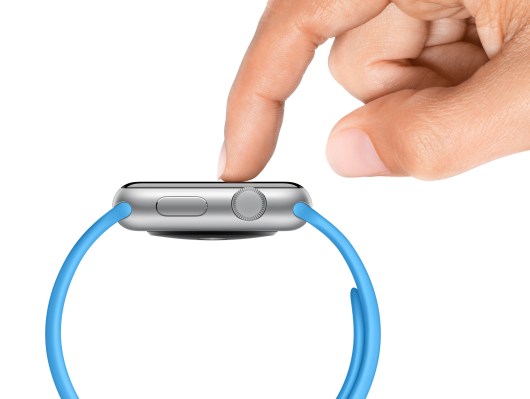Apple’s Force Touch tech, which it built into both the new 12-inch MacBook and the new Apple Watch, is also headed to the next iPhone, according to a new report from the Wall Street Journal. Frankly, after trying the tech out in person, I’d be more surprised it wasn’t using Force Touch across all of its upcoming products. The pressure-sensitive input method allows for a deeper press to be detected as a secondary type of input vs. a standard one, which could open up a lot of options for a completely touch-based smartphone.
The Force Touch trackpad on the new MacBook (and the new 13-inch MacBook Pro with Retina Display) acts and feels like a normal, mechanical Mac trackpad, with a satisfying click when pressed, but in fact its motion is limited to around less than one nanometer of travel, supplanting the downward motion with a very fine side-to-side haptic motor agitation that is impossible to register as anything else than a press. This allows you to press once for a normal click, and then press a second, deeper time following the first to access a secondary function or perform some other action, without having to right-click or open a menu.
On an iPhone, you can see a lot of the potential benefits of using this kind of tech. It wold allow for new control capabilities for games, for instance, and could help make for much more sophisticated input response in apps like Garage Band, where being able to detect the difference between a light and a hard press could translate to different sounds produced by a virtual keyboard. Apple already kind of does this with Garage Band, but it’s a far less sensitive mechanism, which basically uses the iOS device’s motion sensor to register big differences in tap pressure.
Apple showed how Force Touch on new MacBook trackpads enables handwriting input with subtle pressure detection. That kind of input capability on an iPhone or iPad could also open up options for drawing, painting and other creative apps. There are now a number of Bluetooth stylus accessories that mimic pressure sensitivity in certain apps, but Force Touch could allow for more of that to be built into the hardware, and made available to developers at the system level.
The WSJ report doesn’t say if Apple will add the kind of clicky taptic feedback to the iPhone that it has used on the MacBook trackpad at the same time as it introduces pressure detection, but this might be the time for Apple to finally employ those kinds of haptic for things like keyboard clicks on its upcoming device. The taptic hardware is incredibly thing and space-conserving, and the response it provides almost can’t be compared with traditional vibration motors used in haptic systems, in terms of how subtle and senses-baffling it performs in real life. Haptics have never seemed right for an iPhone, but tactics are a different story.
As for other details on upcoming hardware, WSJ says new iPhones (likely coming in fall, as usual) will resemble the current ones in size options, but may actually add a pink (!) metallic aluminum case option, which is currently being tested. I’d expect them to color match the finishes on the Apple Watch Edition before they went in that direction, but this could be another facet of their expanded attempts to offer greater personalization options.
